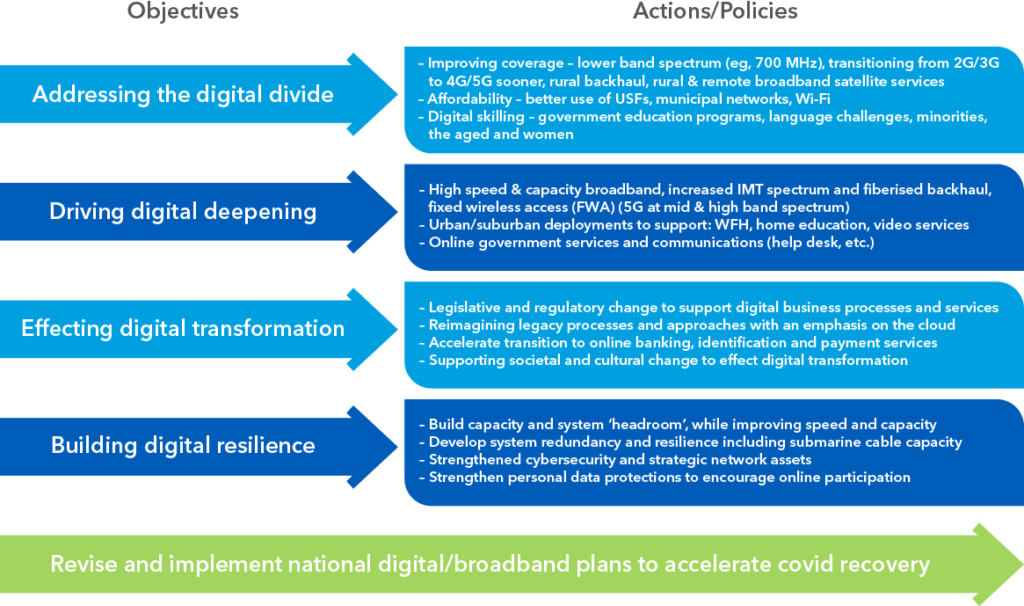While the COVID-19 pandemic triggered fundamental disruptions to the economy and our way of life, it also accelerated the pace of digitalization and connectivity for many. However, the impact of the pandemic on the connectivity landscape has been uneven, due to the interplay of positive and negative factors on different time horizons.
In the immediate emergency phase, lockdown restrictions generated demand for connectivity and digital services, ranging from home delivery to government services. They also helped change people’s preferences for digital solutions such as using electronic payments or teleworking. At the same time, demand was tempered in many countries where connectivity was conditioned on physical presence, for example, in-person purchases or renewals of pre-paid SIM-cards or devices.
In the short- and medium-term, operators boosted connectivity supply by increasing capacity limits and the availability of zero-rated content, while government policies helped speed up investments in network infrastructure or access to spectrum. However, the pandemic also took a toll on the financial capacity of governments and operators, created problems in the availability of a skilled labour force and the functioning of global supply chains, while the uncertain economic environment deterred and sometimes distorted investments.
Aspirational targets for 2030 and the current situation

Source: ITU
The pandemic highlighted the indispensable role of connectivity and serves as a wake-up call for policy actions to better prepare for future shocks. Closing the digital divide, improving the quality of connectivity, and driving digital deepening are essential to improving resilience. Among other benefits, such actions will protect already disadvantaged children against the loss of learning experienced in the pandemic due to no or poor connectivity and avoid the shocks felt by many as remote interactions were forced on often poorly prepared governments, institutions and populations.